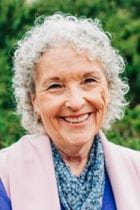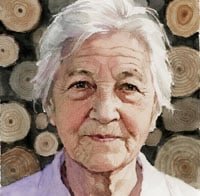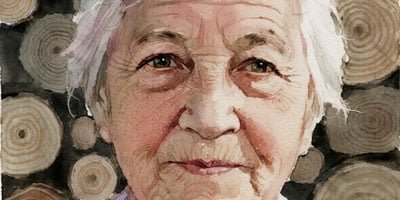Listen to the companion podcast here
Canadian seniors grapple with financial insecurity, social isolation, and inadequate healthcare
Pat Dunn was 69 years old when she realized she did not have enough money to support herself for the rest of her life. A former public health nurse from Ontario, her retirement life on a boat in the Caribbean stopped in 2014 when her husband died of a heart attack. What once promised to be a relaxing retirement with her life partner no longer possible, Dunn returned to Ontario where she attempted to support herself alone. But as she looked for housing, she grew discouraged by the lack of affordable options. After struggling with debt for four years and now homeless, out of desperation she began Googling how to live out of her car safely. That was the lowest point of her life, she said.
She is not the only senior who feels this way. Across the nation, Canadians over the age of 65 struggle with financial insecurity, social isolation and loneliness, and inadequate access to healthcare. Although seniors are projected to make up one-fourth of the national population by 2040, their needs are often neglected.

In a conversation over Zoom, Dunn was eager to share her personal experience dealing with financial insecurity. When she failed to find affordable housing, she knew there had to be a better solution than living in her car.
She created a Facebook group called “Senior Ladies Living Together,” where she invited other senior women in the Peterborough area, a city northeast of Toronto, to discuss the potential of living together. If she could split the cost of housing among several people, it would be more affordable, Dunn thought.
At most, she expected to have ten members, but after the first week, fifty women joined the group, and after one month there were two hundred. Dunn realized this was “way bigger” than her own problem and started researching. She learned that there were some 400,000 single senior women living in unaffordable housing in Ontario in 2019. “I thought, good grief, I got to help some of these women, because I can’t just do this for me,” she said.
In August, 2019, “Senior Ladies Living Together” became “Senior Women Living Together” (SWLT), a non-profit organization. The group opened a website two years later. The platform helps senior single women in Ontario find prospective housemates and affordable living accommodations.
It continues to be necessary today. Six years after SWLT began, rental costs in Canada have skyrocketed. Dunn called these prices appalling. “Nobody can afford anything without spending 70 to 80 percent of their income for the roof over their head,” she said. Today, the group has some 2,700 members, with 66 women currently living in shared housing.

Not only does SWLT combat homelessness among Ontario’s seniors, but it also provides companionship. For Dunn, loneliness is one of the gravest problems for senior Canadians; living with other women helps prevent social isolation. Dunn, who has two housemates herself, likes that she always has someone nearby for a “chat, a laugh, a game.” She hopes that co-op housing will increase in Canada, as she thinks it is one solution to both the unaffordable housing crisis and loneliness among older persons. “We have to start taking care of ourselves because the government isn’t going to,” she said.
I asked Dunn if she could recall a time when she realized the impact of her work. She hummed under her breath. “Almost every day,” she said. Becoming emotional, she said that she is humbled by the resilience and strength of the women in SWLT. Whenever Dunn starts to feel helpless about the housing crisis or the sheer number of senior Canadians living in poverty, a positive story from one of her members reminds her of the importance of her work. “This has got to be done,” she said. “So, I do it.”
“Isolation is at the core of aging”: Loneliness and social isolation among Canadian seniors

Pat Dunn is not alone in her concern about loneliness for Canada’s seniors. Alexis Lebrun, Team Coordinator at Les Petits Frères, a non-profit in Quebec, has noticed increasing rates of social isolation among seniors. Lebrun, who started working with Les Petits Frères in 2021, was keen to speak with me about the organization over Zoom. With a degree in social work from the Université du Québec à Montréal, Lebrun was drawn to Les Petits Frères and its emphasis on fostering relationships with older adults, which he thinks is a “beautiful mission.”
Les Petits Frères, founded in 1962 and based across twelve regions of Quebec, aims to reduce loneliness among seniors who lack strong connections to friends and family. Run largely by volunteers, it organizes social events and coordinates a buddy system connecting volunteers and seniors so that its members have companionship until the end of their lives. In recent years, given Canada’s aging population, Les Petits Frères has experienced a surge in demand, receiving more requests from prospective members than it has the capacity for.

This demand largely comes from a desire for companionship among isolated older adults. Lebrun said that, too often, the physical health of seniors is prioritized over their mental health. But in his view it is critical to pay attention to seniors’ overall wellbeing. Lebrun told me that an increasing number of older adults experience suicide crises, feeling like they have little reason to live. “They prefer to give up rather than continue,” he said. “Having joy and pleasure in life is critical,” he said, to strengthening seniors’ social wellbeing and combating isolation, which he believes is at the “core of aging.”

Lebrun recalled a particularly touching memory of happiness between a volunteer and an older woman that showed him the power of human connection at the end of one’s life. The woman lived in a long-term care facility in Montreal and used a wheelchair, which limited her mobility. With no family members left, the only people she spoke with were employees of the facility. She gradually fell into a depression.
But when a Petits Frères volunteer began visiting her, she was able to leave the facility, taking short trips to a nearby cafe. Lebrun smiled fondly and described how she was able to see places she had not for decades, which dramatically improved her mental health. This experience showed him the positive impact socialization can have on older adults. “We give them a moment of joy, when they can be reassured that everything will be okay,” he said.
A Broken healthcare system: The elderly care crisis

Physical health is central to older adults’ overall wellbeing. Yet in Canada, many seniors lack adequate access to healthcare and personal in-home support. Dr. Lesley Charles, Professor in the Division of Care of the Elderly in the Department of Family Medicine at the University of Alberta, spoke to me about the state of elderly care in Canada. Over a Zoom call, she was straight to the point about the gaps in the Canadian healthcare system in terms of elderly care, saying, “The healthcare system is stretched.”
Dr. Charles said that older adults take up the bulk of Canada’s healthcare system, with the most frequent doctor’s visits, emergency visits, and hospitalizations. However, senior Canadians commonly lack quick and accessible healthcare. The COVID-19 pandemic increased wait times for diagnoses and treatment, she said. Prior to the pandemic, waitlists for hospital treatment in Alberta were typically three months. Now, there is an enormous backlog of patients requiring care. “Nine months is too long for a patient waiting for a dementia diagnosis,” she said.
Dr. Charles is most concerned about a lack of primary care funding. Often, funding for hospitals is prioritized over primary health care. But “it’s really shortsighted not to fund primary care,” she said. When seniors lack access to primary care, it creates a domino effect, meaning they are more likely to become sick and subsequently hospitalized. So better funding for primary care would both reduce costs of treatment and keep patients healthier in the long term, she said.
Improved access to primary care could also keep patients at home for longer, which is what most seniors want. According to the Government of Canada, 92.1% of Canadian seniors currently live in private dwellings, with no desire to leave. Pat Dunn reflects this statistic, telling me, “Nobody wants to go into a long-term care facility, thank you very much.”
It is important that patients have adequate resources to remain at home, which will also keep them happier, Dr. Charles said. Caregivers are critical to supporting seniors in their homes. But personal support workers are expensive, costing between $28 to $38 an hour in Ontario. An immense burden is then placed on family caregivers, who provide support with everyday activities like grocery shopping, getting dressed, and attending medical appointments. Dr. Charles said it is especially difficult for those in a “sandwich generation” — individuals who care for both their older family members and their own children. This burden of care often harms caregivers’ physical and mental health.
Dunn has personally experienced the strain of caregiving. When one of her housemates was restricted to her bed while waiting nearly one year for a knee replacement, Dunn took up the primary burden of care. But given her age, she grew physically sick from the effort and was hospitalized for a few days.
While most Canadian seniors want to age in-home, it is unsustainable for family caregivers to be their sole source of support. When I asked Dr. Charles why young people should care about better healthcare for older adults, she reminded me that we will all grow old eventually. “It’s easy to think when you’re young and healthy, ‘well, I don’t need the hospital, I don’t need this, I don’t need that,’ but at some point, we all will,” she said. “It’s in all of our best interest to make sure that care is there for us when we need it.”
An intersectional lens: Older racialized immigrants face disproportionate challenges

Canadian older adults at large face financial insecurity, social isolation, and barriers to accessing healthcare. But for older racialized immigrants arriving in Canada, these challenges are even more pronounced. To understand why this demographic is particularly vulnerable, I spoke with Dr. Mohammad Nuruzzaman Khan, Associate Professor at the University of Manitoba in the Faculty of Social Work. With an educational background in social work and social welfare, Dr. Khan’s research focuses on economic justice for historically marginalized populations. He was eager to share his expertise on the financial wellbeing of older racialized immigrants, spending nearly forty minutes speaking with me over Zoom.
Older racialized immigrants face distinct economic barriers upon immigrating to Canada, Dr. Khan said. To understand why this is the case, he was keen to contextualize the Canadian immigration process more broadly. Many older racialized immigrants immigrate under Canada’s family unification program to unite with their children or grandchildren. But there is a catch: upon arriving in Canada, family sponsors and immigrants must abide by the 20-Year-Dependency Period. This stipulates that when you sponsor a family member over the age of 22, you must financially support them for 20 years after their arrival.
During this period, immigrants cannot access any benefits. While Canadian seniors can access three “pillars” of federal financial support—Old Age Security, Guaranteed Income Supplement, and the Canadian Pension Plan—racialized older immigrants have access to none of these. “The three pillars that really work for Canadian seniors—it’s not going to work for this group of people,” Dr. Khan said.
This dependency period places an enormous burden on the family of senior immigrants, as they need to care for their family members in virtually every aspect of life, whether that be the cost of everyday living or the financial burden of healthcare. “The federal government is always thinking about the dollars and cents,” Dr. Khan said. It does not want to take responsibility for this demographic, rather placing the burden of care on immigrants’ family sponsors.
Dr. Khan said this creates an “enclosure,” whereby older racialized immigrants are unable to integrate into Canadian society socially or economically. Ageism, compounded with racial discrimination and xenophobia, makes it difficult for them to enter the job market. But this is a missed opportunity, he said. Older immigrants offer great value in terms of personal work experience and previous education and should not be confined to familial boundaries.
It is not just their economic wellbeing that is endangered, but also their social wellbeing. As an immigrant himself, Dr. Khan often speaks with other immigrants in his community in Winnipeg. Through his conversations, he has noticed that loneliness is ubiquitous. For him, social isolation is one of the largest factors that harms older racialized immigrants’ overall wellbeing. In many cases, older immigrants will spend their days at home while their children and grandchildren are working or at school. Typically without drivers’ licenses, their movement is also limited.
He told me about an 80-year-old immigrant in his community who struggles with loneliness. Confined to his son’s home, he feels isolated and often calls Dr. Khan, asking when he will be able to see him again. “In his country of origin, he had the freedom to move freely, but he does not have this in Canada,” he said.
I asked him what can be done to support the economic and social wellbeing of older racialized immigrants. He said there needs to be more opportunities for this demographic to integrate into Canadian society; rethinking the 20-Year-Dependency period is critical to achieving this.
“We need to pay special attention to this group of people,” Dr. Khan said. “They are here, they are going to be here, they are Canadian, and so we cannot exclude them.”
“Citizens with valuable life experience”
Youth is often valued over old age. Alexis Lebrun said that we tend to pay more attention to young people, assuming that the perspectives of younger generations are more interesting than that of senior citizens. “When we go out in the street, we don’t often see older people,” he said. They become invisible, their needs and desires fading into the background as they age. But it is critical that older people not be ignored. “They, too, are citizens with valuable life experience,” he said.
Lebrun also thinks it is important that younger and older generations form relationships with one another. Older people have unique perspectives, allowing young people to see the world from a different point of view, he said. “They have so many things to say. We need to listen to them.”


